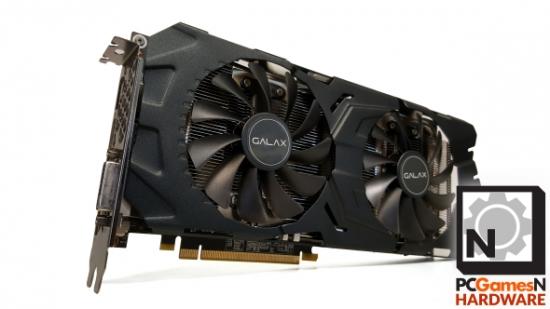Unless you’re going to spend either $700 or $1,200 on a graphics card Nvidia haven’t got anything new coming your way until they start talking about their Volta GPUs later this year. So, what’s a dedicated green team aficionado without a Swiss bank account to do? Well, the GTX 1070 is actually still a mighty tempting option…
Read more: check out our pick of the best graphics cards around today.
Nvidia’s GTX 1070 has been pushed way down the graphics stack since it first launched almost a year ago. Since then we’ve had two new Titan cards – the Titan X and Titan Xp – and the impressively powerful GTX 1080 Tibut, in the face of AMD launching a half-generation RX 500-series of GPU rebrands, the 1070 is still one of the cheapest cards capable of delivering high-end gaming performance.
And if you go for a factory-overclocked version like this Galax offering you can get close to GTX 1080 performance without having to spend GTX 1080 money. This $400 (£360) Galax variant is capable of comfortably rocking the Pascal GP104 silicon above the 2GHz point and, while it’s not necessarily going to deliver 4K at 60fps on the highest graphical settings, you’ll easily be able to knock about the 40-50fps point, which is nothing to sniff at.
Click on the jump links to get to your preferred category.
- Galax GTX 1070 EXOC SNPR benchmarks
- Galax GTX 1070 EXOC SNPR performance
- Galax GTX 1070 EXOC SNPR verdict
Galax GTX 1070 EXOC SNPR specs
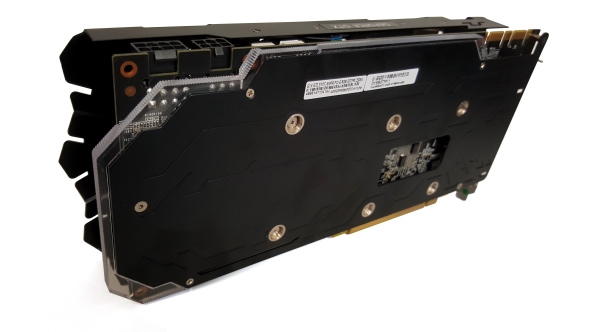 Depending on where in the world you hail from you’ll find this heavily overclocked card under either the Galax or KFA2 badge. In the Asia/Pacific and North American regions it’s Galax and in Europe the card gets branded as KFA2. Apart from the name though they’re identical cards, which is great because this thing is mighty quick.
Depending on where in the world you hail from you’ll find this heavily overclocked card under either the Galax or KFA2 badge. In the Asia/Pacific and North American regions it’s Galax and in Europe the card gets branded as KFA2. Apart from the name though they’re identical cards, which is great because this thing is mighty quick.
The headline specs are all around the hefty factory-overclock they’ve foisted on the GP104 GPU at the heart of the GTX 1070 EXOC SNPR (that’s extreme overclocked sniper, to you and me). Where the standard GTX 1070 peaks at 1,683MHz the Galax card comes in rated at 1,784MHz. A full 100MHz boost is one thing, but thanks to the way things work in Nvidia’s GPU world that’s not the whole story.
The dynamic clocks of the Pascal architecture mean that, with the right thermal conditions and energy supply, the GeForce GPUs will happily tweak their own frequencies on the fly and boost as high as they can get. And Galax have made sure to give the EXOC SNPR all the necessary tools to push that as far as possible.
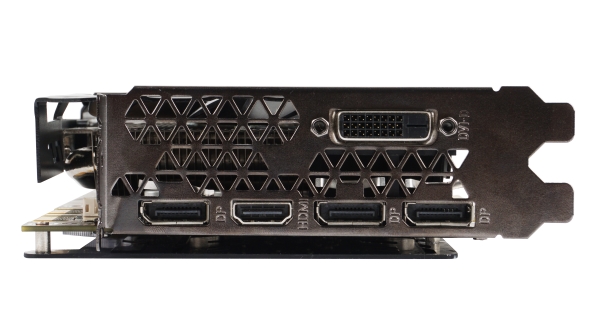 The enormous heatpipes on the Galax cooling array, coupled with the twin fans and aluminium backplate, ensure there’s a serious level of chip-chilling on offer. Alongside that they’ve also redesigned the PCB itself, using specific components for better electrical performance, as well as dropping a five phase power supply onto the board for the GPU and another two phases for the memory alone. Galax have also put an extra 6pin power connector on there to make sure the card can draw as much power as its overclocked components desire.
The enormous heatpipes on the Galax cooling array, coupled with the twin fans and aluminium backplate, ensure there’s a serious level of chip-chilling on offer. Alongside that they’ve also redesigned the PCB itself, using specific components for better electrical performance, as well as dropping a five phase power supply onto the board for the GPU and another two phases for the memory alone. Galax have also put an extra 6pin power connector on there to make sure the card can draw as much power as its overclocked components desire.
The cooler is also of the 0dB design too, though the thermal threshold has been set lower than the MSI or Asus versions we’ve previously tested. Where their fans don’t get spinning until the GPU tips over the 60°C mark this Galax card, with its Silent Extreme Technology, spins its fans up once the silicon goes above 45°C.
And finally… if you’re into your RGB LEDs Galax have got you covered on that front too, with a multicoloured strip around the outside of the backing plate and and backlit ‘GeForce GTX’ on the side which stares out of your chassis’ Perspex side-panel peephole.
Galax GTX 1070 EXOC SNPR benchmarks


Galax GTX 1070 EXOC SNPR performance
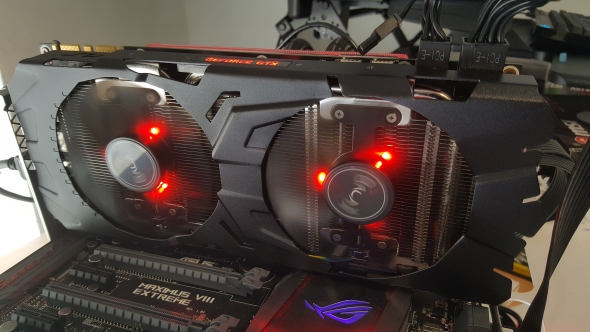
If you’re just looking at the out-of-the-box performance of the Galax card you might be forgiven for feeling a little disappointed. Our Founders Edition GTX 1070 is capable of posting almost identical (and very occasionally faster) average frame rate figures compared with the overclocked Galax variant.
In real terms the 1,784MHz boost clock isn’t far off what the Founders Edition version runs at, thanks to those dynamic Pascal GPU frequencies. Across our benchmarking suite the standard GTX 1070 bats between 1,721MHz and 1,823MHz; way above the 1,683MHz it’s rated as. The same can be said of this overclocked Galax version too, with its unfettered GP104 silicon sometimes knocking around 1,924MHz mark.
But despite that frequency delta, there isn’t the same difference in actual gaming performance. The Vulkan performance and 3DMark benchmarks seem to benefit the most from the higher clockspeeds, but taking the whole suite into account the Galax card isn’t actually delivering a huge frame rate boost.
In the UK there’s barely a tenner’s difference in price between the cheapest GTX 1070 you can grab on Amazon and this overclocked card (under the KFA2 badge), which makes the choice simple – just go for the higher-clocked version. But in the US the price difference is over $50. So, why should you even consider paying the difference if you’re not getting higher frame rates?
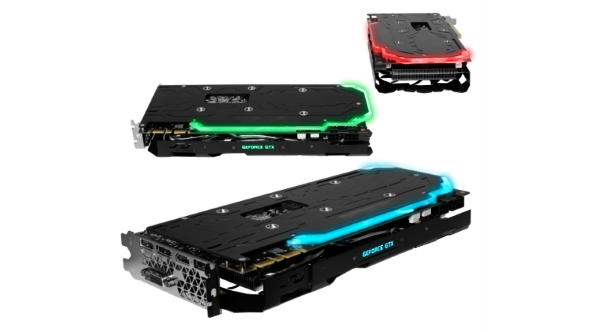 It’s all about that EXOC name. This card’s about actual overclocking and not just about having slightly higher clocks the instant you plug it into your PC. These factory-overclocked cards offer improved cooling, better power circuitry, extra power connectors and specially picked GPUs capable of the highest clockspeeds. And that means you’ll be able push them even further than their out-of-the-box speeds with just a little effort on your part.
It’s all about that EXOC name. This card’s about actual overclocking and not just about having slightly higher clocks the instant you plug it into your PC. These factory-overclocked cards offer improved cooling, better power circuitry, extra power connectors and specially picked GPUs capable of the highest clockspeeds. And that means you’ll be able push them even further than their out-of-the-box speeds with just a little effort on your part.
Some people will just pay the extra for a factory-overclocked card so they can have the fastest version of whatever GPU generation they’ve bought into. But that’s almost always a complete waste of cash – you will be able to get the same frequency out of any stock-clocked GPU with a little light clockspeed twiddling. Manufacturers never push things that hard even for their factory-overclocked SKUs, so any card rated for reference clocks will be able to go that little further.
A specially selected overclocking GPU, however, should be capable of operating at higher clockspeeds than any ol’ chip just slung into a reference board, and that can make a big difference in performance. As you can see from the overclocking benchmarks, with the GP104 GPU running at over 2GHz you get a serious uplift in gaming performance both over the Founders Edition card and the EXOC SNPR’s out-of-the-box speeds. It also means you’re getting almost GTX 1080 levels of gaming performance out of your GTX 1070 without having to pay out the sort of money they’re still asking for that card.
Galax GTX 1070 EXOC SNPR verdict
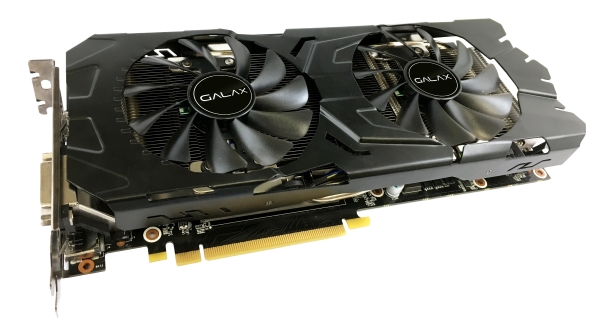 In the UK it’s almost a no-brainer. Under the KFA2 brand the EXOC SNPR is around the same price as a standard GTX 1070 and, with the extra performance potential and silent cooling, it’s a fantastic version of Nvidia’s more modest Pascal GPU.
In the UK it’s almost a no-brainer. Under the KFA2 brand the EXOC SNPR is around the same price as a standard GTX 1070 and, with the extra performance potential and silent cooling, it’s a fantastic version of Nvidia’s more modest Pascal GPU.
It’s a slightly different story in the US where you’re being asked to pay a little more for the privilege. That said, with the ability to top 2GHz as standard using stable GP104 silicon, it’s still pretty hard to argue with Galax’s overclocking performance.
That’s what really sets this card apart from the stock-clocked competition; knowing you have the potential performance in the locker to take the card’s gaming frame rates way beyond any out-of-the-box performance you’ll find from any GTX 1070 on the market. That’s not to say the Galax card is the only one capable of topping 2GHz, but with the thermal support and the extra power circuitry on offer you’re pretty much guaranteed high frequency gaming.
But if you’re not willing to put any of the work in yourself then you might as well just go shopping on a pure price-focus. Just buy the cheapest GTX 1070 you can find – with any aftermarket cooler on there you’ll get great gaming frame rates anyways. Though if you’re not that lazy, the Galax card can bring you almost another level of gaming performance.
